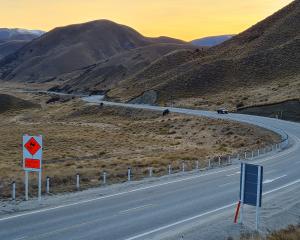
Gill Shaw is pressed for time at her Roxburgh home.
She has been packing the creations of her fellow Southern Fun Felters group members to take to Dunedin for an exhibition dubbed Felt Friendz at the Dunedin Community Gallery ahead of its opening on Tuesday.
As convener, her living room is crammed with creations that range from the practical - hats, scarves, slippers, boots - to the outlandish.
Covering most of the space in front of her ranchslider is a full seabed diorama, in fact, every available surface is taken up.
All of it is made of felt.
So what does it take to turn washed wool into a work of art?
Mrs Shaw explained.
Wet felting uses water, soap and agitation to open up then bind the fibres together creating a material that is not woven, like linen or cotton.
"If you look at wool under a microscope each fibre has these little barbs."

Essentially felting used the technology the wool already had and took it a step beyond its form as a fleece, those barbs in the fibres binding it together to make cloth that was both durable and strong.
Dyes could be added and other types of fabric could be used in the process as the fibres would bind to it.
It had been traced back historically as one of the first art forms and was universal across almost all human civilisations, she said.
The story of St Clement and St Christopher relates that the men packed their sandals with wool to prevent blisters while fleeing persecution. At the end of their journey, the movement and sweat had turned the wool into felt socks, she said.
Felt provided clothing, shelter - such as yurts, rope, bags, rugs and numerous other practical items.
Today, felting was still used to make useful items but had expanded into a recognised art form.
While the uses of felt had changed over time, the methods of felting remained the same with just a few modern updates, such as bubble wrap.
For Mrs Shaw, using bubble wrap to agitate the fibres was her method of choice, she said.
The Southern Fun Felters meet monthly in Cromwell.
The meetings are an informal, hands-on experience, where women showcase creations and start felting based on the enthusiasm and inspiration those attending provide, Mrs Shaw said.
Member Beverley Muir said the meetings typically attracted between seven and 15 people from a base of about 24 members. There were plans to increase the frequency of meetings to twice a month.

Wool was the material all members worked with and that was in keeping with tradition, Mrs Muir said.
Felt from wool was considered to be the oldest known textile.
However, not all wool was created equal, she said.
"Merino is good for reducing the itchy factor if it is clothing."
She had used a particularly coarse type of wool sourced from Belgium to make a pair of Russian valenki boots.
Mrs Shaw said Covid-19 lockdown had spurred a burst in activity and much of that work would be displayed in the exhibition.
Also to feature would be creations made by members for previous WoolOn competitions - including category-winning garments and accessories, plus articles exhibited at the Southern Hemisphere Felting Convergence which took place in Queenstown in 2019.
While most of the work on exhibit was produced by the Southern Fun Felters, the exhibition would also include work from other southern felters.
• Felt Friendz runs from February 2 to 6 at the Dunedin Community Gallery, 20 Princes St, from 10am to 4.30pm. Entry is free.












